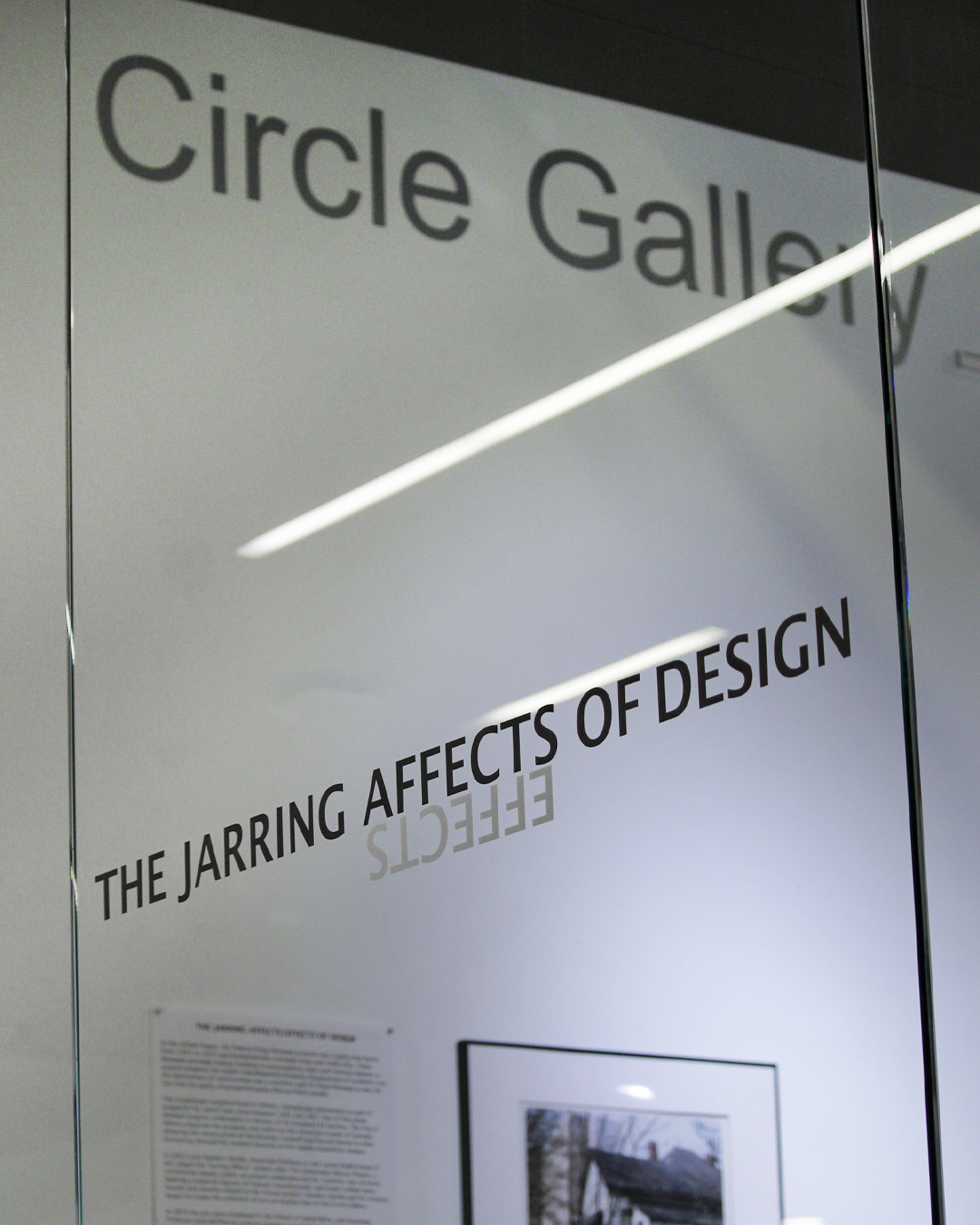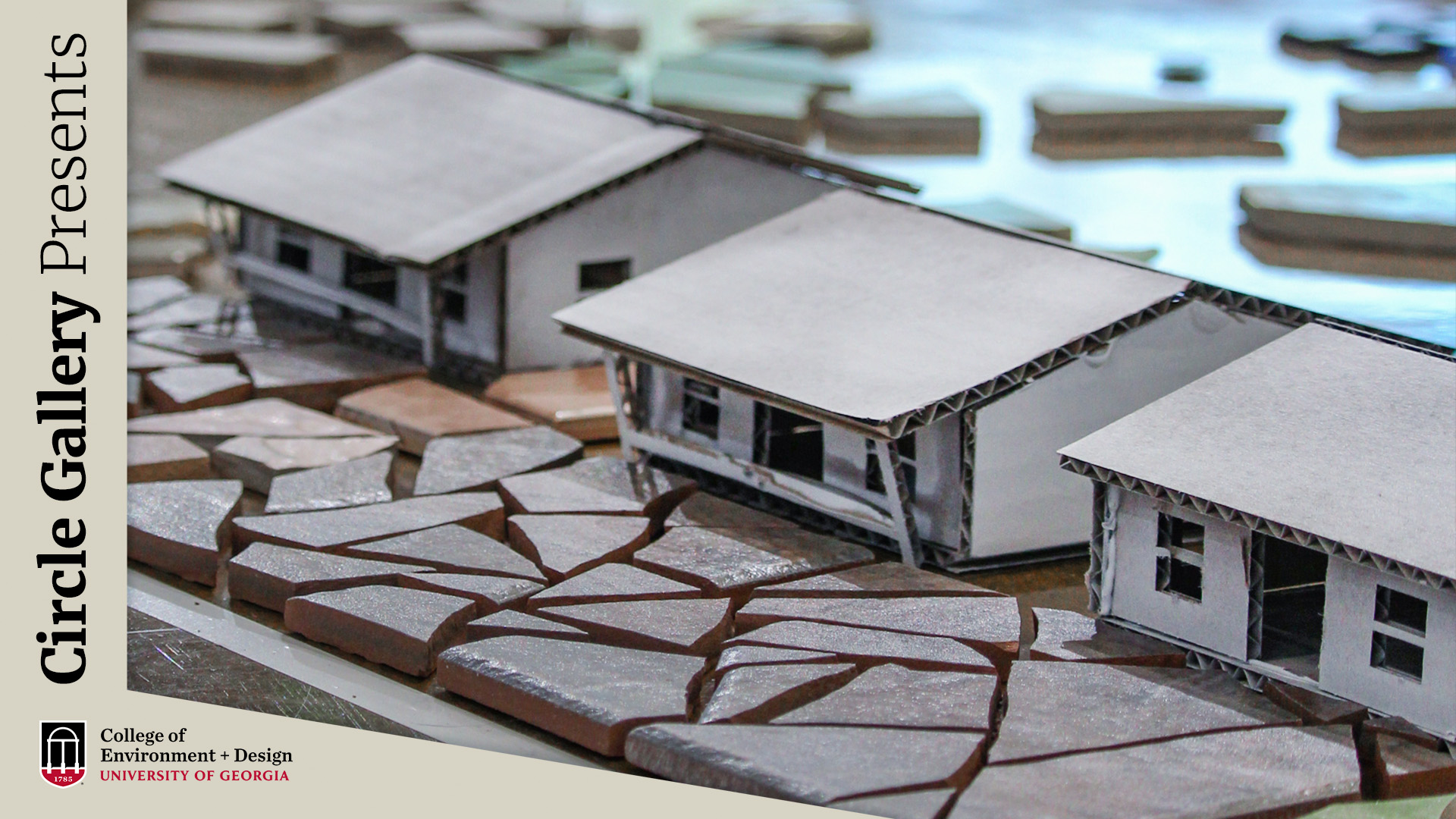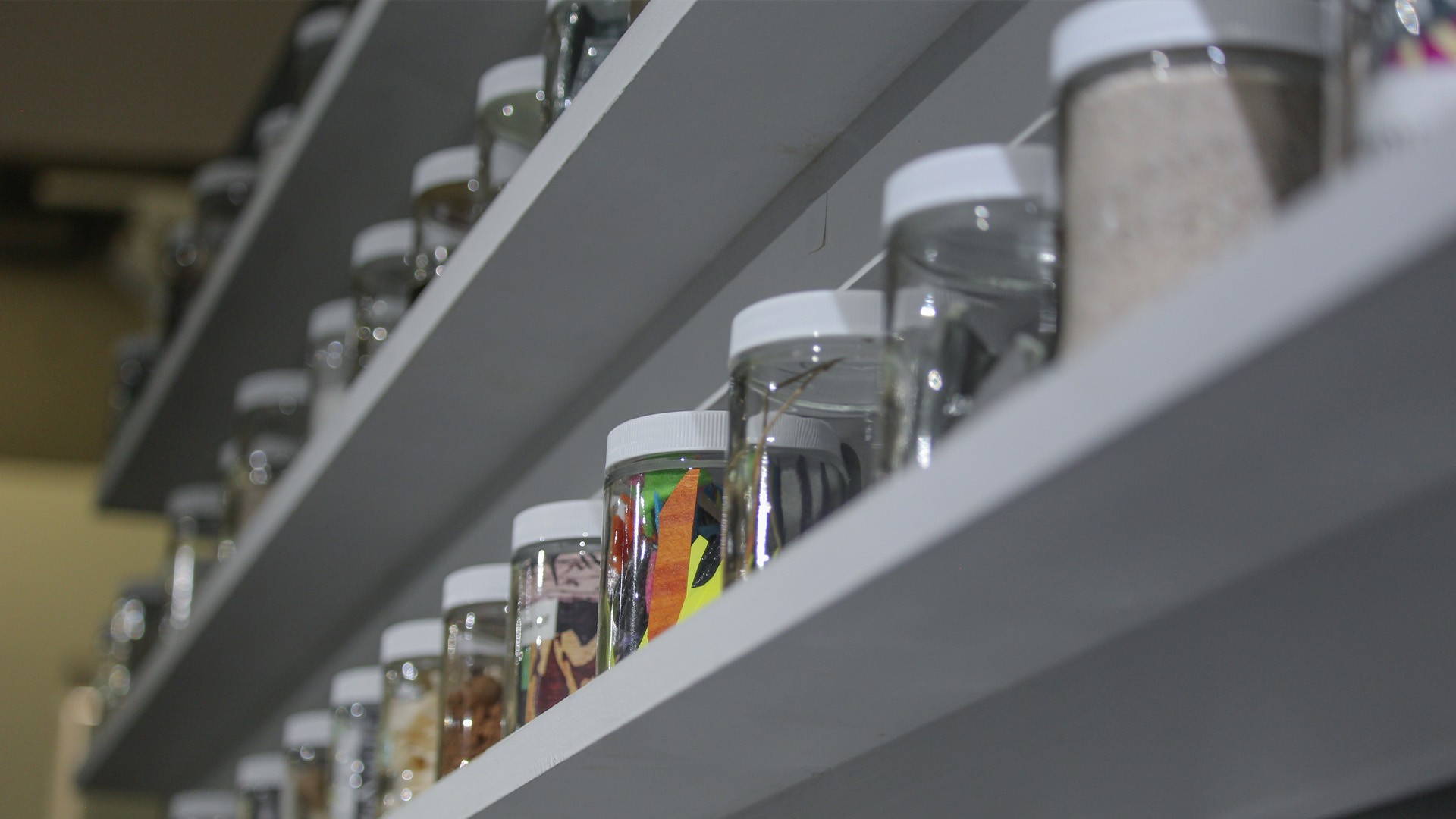The newest exhibit in the College of Environment and Design’s Circle Gallery, “The Jarring Affects and Effects of Design,” seeks to explore the complicated story of Urban Renewal in Athens, GA. First appearing at the Lamar Dodd School of Art in 2022, this dynamic and collaborative exhibit has travelled across UGA’s campus gaining additional layers and perspectives each time it is exhibited. An interdisciplinary effort of four UGA professors – Lynn Sanders-Bustle of the Lamar Dodd School of Art, Jane McPherson of the School of Social Work, and Katie Marages and Doug Pardue of the College of Environment and Design – the exhibit has allowed the story of Urban Renewal to be told from the perspective of participatory art, social work, history, and design. In its current iteration, the exhibit examines design, displacement, replacement, loss, and modernization using jars, mosaics, models, maps, and historic photographs, allowing visitors to develop an understanding of Urban Renewal in Athens.
 Though “The Jarring Affects and Effects of Design” has a local focus, Urban Renewal was not unique to Athens. The use of eminent domain to buy, level, and rebuild neighborhoods deemed “slums” or “dilapidated” was practiced across the country from the 1950s through the 1970s. These projects were enabled by the 1949 Housing Act which provided loans to cities to acquire and clear slums for redevelopment through private developers. Though displaced residents and businesses received some compensation, the money did not cover the financial, emotional, and social toll of losing one’s property and community. The two urban renewal projects in Athens took place in the 1960’s and were referred to as R-50 and R-51. Project R-50 cleared the neighborhood known as Linnentown in order to expand the University of Georgia and provide dormitories, a dining facility and parking. According to a 1961 report, 87 families lived in the area prior to demolition and redevelopment. Project R-51, also referred to as the College Avenue Renewal Project, included an area of downtown that was both commercial and residential and bounded by Hancock Street, Hull Street, the railroad, and the Oconee River.
Though “The Jarring Affects and Effects of Design” has a local focus, Urban Renewal was not unique to Athens. The use of eminent domain to buy, level, and rebuild neighborhoods deemed “slums” or “dilapidated” was practiced across the country from the 1950s through the 1970s. These projects were enabled by the 1949 Housing Act which provided loans to cities to acquire and clear slums for redevelopment through private developers. Though displaced residents and businesses received some compensation, the money did not cover the financial, emotional, and social toll of losing one’s property and community. The two urban renewal projects in Athens took place in the 1960’s and were referred to as R-50 and R-51. Project R-50 cleared the neighborhood known as Linnentown in order to expand the University of Georgia and provide dormitories, a dining facility and parking. According to a 1961 report, 87 families lived in the area prior to demolition and redevelopment. Project R-51, also referred to as the College Avenue Renewal Project, included an area of downtown that was both commercial and residential and bounded by Hancock Street, Hull Street, the railroad, and the Oconee River.
The exhibit was officially opened on February 8th as part of the 2025 Art & Education for Social Justice Symposium hosted by the University of Georgia Lamar Dodd School of Art and School of Social Work. The symposium aimed to amplify marginalized voices in academia, encourage the exchange of theories across disciplines, and promote conversation around the use of education and art to affect social change. Complementing the message of the symposium, “The Jarring Affects and Effects of Urban Renewal” incorporates various academic voices to uncover an important axis of Athen’s hidden history through the synthesis of art, design, and history in a visually exciting way.

Giving a holistic picture of the past is no simple task. Through hours of archival research, interviews, and design reviews, the faculty and students contributing to this project were able to navigate this complex aspect of Athens’ history. Research was aided by a collaboration between the UGA Special Collections Library and the Masters of Historic Preservation program to digitize archival collections related to Urban Renewal. With thousands of photographs, documents, and maps related to the topic, the digitization and inclusion of this collection in the Digital Library of Georgia allows for more efficient research and increases public accessibility to the information.
The “Jarring Affects and Effects of Urban Renewal” will be on exhibit in the Circle Gallery at the Jackson Street Building through April 18th and is open to the public Monday through Friday from 9 am until 5pm. The College of Environment and Design is excited to host this interdisciplinary, dynamic exhibit which facilitates visitors’ deeper understanding and engagement with the complex topic of Urban Renewal.
Visit the Circle Gallery!
Jackson Street Building
285 South Jackson Street
Athens, GA 30602 USA


